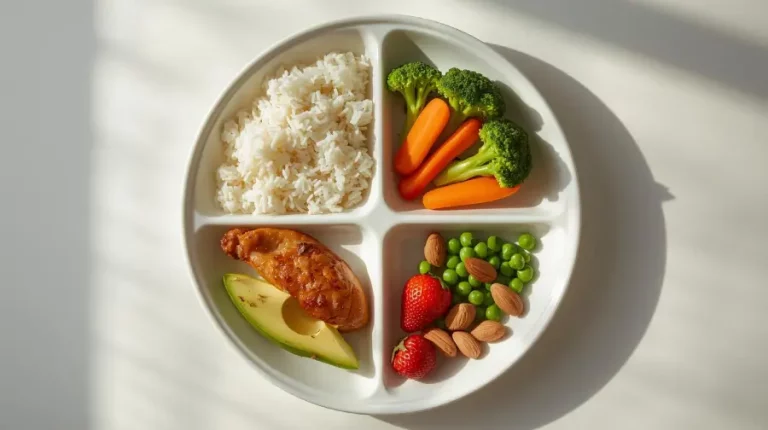6. Listening to Our Bodies
Introduction: An Invitation to Listen
When I become aware of what I put into my mouth, I also become aware of the thoughts I feed my mind.
For many of us in OA, this realization marks the beginning of awakening — because what we eat is not just food; it reflects the kind of thinking that either allows us to be present in our bodies or drives us away from them.
For years, we had been disconnected from our bodies — silencing them through overeating or punishing them through starvation and rigid control. We didn’t realize that our bodies had been trying to speak to us all along, whispering:
“Listen to me. I am not your enemy. I am your messenger.”
In recovery, we have learned that listening to the body isn’t only about food — it’s about listening to life itself.
Each time we pause in the face of hunger, fullness, fatigue, or craving, we are practicing inner stillness — a silence through which our true voice can finally be heard.
The essential question is:
Can we truly recover from compulsive eating without learning to hear the voice of our bodies?
History: From Control to Awareness
In OA’s early years, many members believed that the path to recovery lay in total control over food.
Mildred — one of the first members and a devoted follower of Irene, who founded the structured meetings — would often say softly, with a confident smile:
“Sugar turns into alcohol in our bodies. When we eat sugar, our system flickers like an old fluorescent lamp.”
At that time, no one asked where she had heard this from — not because everyone believed it, but because most of us, in our desperation, clung to any rule that promised control.
Mildred proudly spoke of her seventy-five-pound weight loss and became, for many, a symbol of success.
In those early days, OA food plans were identified by color — such as the Gray Sheet, the Yellow Sheet, the Blue Sheet. Each plan listed specific foods to be eaten and those to be avoided.
Members carefully recorded their meals, weighed their portions, and often judged their self-worth by how closely they followed the plan.
But over time, a quiet truth began to emerge:
Despite strict adherence to food plans, many of us were still suffering.
Our bodies had become lighter, but our minds and spirits remained bound by obsession and fear.
That realization marked a turning point in OA’s history.
The program began shifting from “control” to “awareness”.
We discovered that outer discipline was necessary — but not enough.
A food plan could truly serve us only when it nourished not just the body, but also freed the spirit.
From that time on, OA’s philosophy gradually evolved.
Instead of seeing food as the enemy, we began to see it as a message from our bodies.
Instead of focusing on restriction, we began to focus on listening to genuine needs.
And instead of fighting against ourselves, we started to learn the art of listening — with compassion, honesty, and trust.
Awareness: A Bridge Between Mind and Body
In OA, we’ve discovered that what we put into our mouths often mirrors what’s going on in our minds.
Overeating, restricting, obsessing, or avoiding food — each carries a message from thoughts and feelings we may have ignored.
When we say, “If I become aware of what I put into my mouth, I become aware of what I feed my mind,” we mean there is a living connection between mind and body — subtle but real.
Every unconscious bite continues an unconscious thought.
Every mindful choice with food is a step toward coming home to ourselves.
Our bodies don’t lie.
When we feel tired, heavy, or restless, it’s often because a fearful or self-rejecting thought has already taken root.
At those moments, before reaching for food, we can pause and ask:
“What am I really hungry for — physical nourishment or emotional comfort?”
Awareness invites us to restore a relationship that was long broken — the relationship between body, mind, and spirit.
When we listen to the body, we’re also listening to our thoughts and feelings — without judgment, without shame.
Food is no longer the enemy or the reward; it becomes a way to practice presence.
Recovery from compulsive eating is the practice of returning to that presence.
It’s learning to tell the difference between physical hunger and emotional hunger.
Our bodies speak a language of their own; all we need is to listen to understand the meaning of hunger, fullness, or desire, not out of fear, but out of love.
Listening to the Body: The Silent Language of the Spirit
Our bodies are always speaking — but in a language that can only be heard in silence.
Sometimes through a gentle heartbeat, a slight discomfort in the stomach, or a feeling of lightness or heaviness within.
Each of these sensations is an invitation from the spirit — a call to pause, to return to presence.
For years, we treated our bodies as the enemy.
We fought against hunger, resisted fatigue, and mistrusted appetite.
But in recovery, we’ve learned that the body is not an enemy or a weakness — it is a voice, communicating in physical form.
When we listen to the body, we are truly listening to the spirit.
To hear the body’s voice is to practice humility — to admit that we don’t always know what’s best for us, and that sometimes the body knows before the mind does.
The body says:
“I’m hungry” — not to be filled, but to be nourished.
“I’m tired” — not to escape responsibility, but to return to balance.
“I’m full” — not from deprivation, but from contentment.
As we practice listening, food ceases to be the center of our attention.
It becomes a bridge — a means of connection with ourselves.
Each simple meal becomes a conversation with the body, a moment for gratitude, a step toward peace.
In this quiet awareness, abstinence is no longer a rigid restriction; it becomes respect — respect for the body, for balance, and for that inner voice that gently reminds us:
“Eat enough, not too much — because you deserve peace.”
The body speaks without words — yet if we listen with the heart, every beat, every breath, and every meal becomes a lesson in love and presence.
Designing a Food Plan: Outer Structure for Inner Peace
For us in OA, a food plan is more than a list of foods or limits — it is a sacred agreement between us and our bodies, built on respect, structure, and love.
We come from chaos and confusion.
For years, our choices around food were shaped by fear, anger, or habit.
Now, our food plan helps us pause before reacting and make decisions with awareness.
This outer structure becomes a tool for finding inner peace.
When designing a food plan, we consider three essential dimensions: the kind of food, the timing of meals, and the quantity.
When we choose what to eat, we become familiar with the main food groups — proteins, starches, vegetables, fats, and fruits — so that our choices nourish and balance both body and mind.
In deciding the time we eat, we learn to structure our meals around the body’s real needs and the rhythm of our daily lives, helping the body feel safe and cared for.
In measuring the amount we eat, we use standard portions or a scale to recognize the boundary between true hunger and excess.
But above all, we learn that the food plan is not a rigid rulebook. It is a living, flexible tool — one that grows and changes with our spiritual awareness.
In the beginning, we may rely on a sponsor or a nutrition professional, but ultimately, the voice we are learning to trust most deeply is the voice of our own body.
Our food plan is not only about maintaining abstinence; it is about restoring a healthy relationship with the body. When we eat with love and respect, abstinence no longer feels like deprivation — it becomes freedom: freedom from obsession, fear, and shame.
Each time we make a conscious food choice, we are saying to our body: “I trust you. I am at peace with you.”
And in that moment, outer order becomes inner freedom.
Listening to the Body: A Loving Conversation with God
When we first begin to hear the body’s voice, we may mistake it for fear or confusion.
But in time, we learn that this voice never lies.
Our body is not our enemy; it is the voice of the spirit.
For years, we fought against it — against hunger, against the natural shape of our bodies and against its needs.
But now, instead of silencing it with food, we listen.
Every inner signal, every craving, every feeling of fullness or emptiness is in reality an invitation from our Higher Power — calling us home to our true selves.
Listening to the body is entering into an honest relationship with ourselves.
It means asking from within:
“Am I truly hungry — or do I need comfort?”
“Is it time to eat — or time to write, pray, or take a walk?”
The answers to these questions lead us out of the darkness of compulsion and into the light of conscious choice.
On this path, abstinence is no longer a restriction — it becomes an act of reverence.
When we listen to our inner voice, we are, in truth, listening to God speaking through our body.
And each mindful bite becomes a small prayer — a prayer for presence, for balance, for love.
In the end, we come to understand that what we eat is more than physical nourishment.
It mirrors the thoughts we feed our minds.
When we become aware of what we put into our mouths, we also become aware of what we are feeding in our hearts.
And in that sacred moment of awareness, the body’s voice becomes the voice of God —
speaking softly within us:
“My child, eat to live, not to forget.
Be still… I am with you.”






